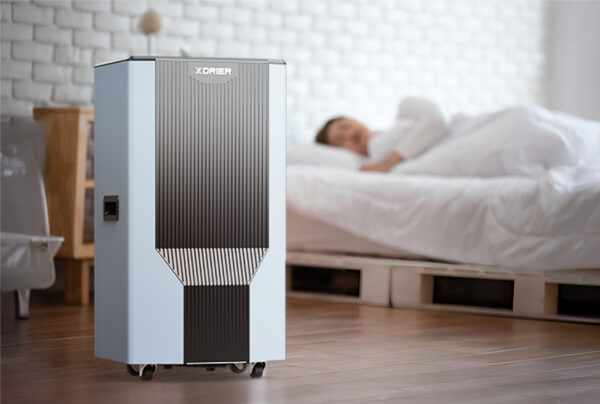The Ultimate Guide to Understanding Allergies and How to Combat Them

Allergies come in many forms—seasonal, pet, skin, or even medication-related—and they can disrupt your health and comfort.
From hay fever and allergic asthma to eczema and insect venom allergies, this guide dives deep into common types of allergies, their triggers, and practical strategies for relief.
Learn how to identify your allergens, improve air quality with tools like XDRIER, and create an environment that keeps allergies at bay.
Seasonal allergies
Seasonal allergies, as the name suggests, occurs when you sneeze and cough during certain and specific times of the year.
For instance, in many areas of the United States, spring allergies start in February and last until the early summer.
While timing and the severity of an allergy season can vary across the country, the following climate factors can also trigger your symptoms:
- Tree, grass, and ragweed pollens thrive during cool nights and warm days
- Mold grows quickly in heat and high humidity
- Pollen levels tend to peak in the morning hours
- Rain washes pollen away, but pollen counts can soar after rainfall
- Airborne allergens are grounded on days when there is little to no wind
- Pollen counts surge when the day is windy and warm
Allergic rhinitis
Hay fever, also called allergic rhinitis, is an allergic reaction to allergens.
Several indoor and outdoor allergens can cause allergic rhinitis, including:
- Pollen
- Mold spores
- Pet dander
- Dust mites
- Cockroach droppings and saliva
Allergic rhinitis is very common, and you can have it at any time of the year.
Allergens are harmless to most people. However, when you’re having an allergic rhinitis episode, your immune system thinks the allergens are threatening your system. When this happens, your immune system tries to protect your body by releasing natural chemicals into your bloodstream, with the main chemical called histamine.
Insect venom allergies
Insect stings can trigger severe allergic reactions in sensitive individuals. The most common culprits include bees, wasps, hornets, yellow jackets, and fire ants. While most people experience only mild local reactions, those with venom allergies may develop anaphylaxis—a potentially life-threatening condition requiring immediate medical attention.
When an allergic person is stung, their immune system overreacts to proteins in the insect’s venom, causing symptoms ranging from extensive swelling to difficulty breathing. For those diagnosed with venom allergies, carrying an epinephrine auto-injector becomes essential for emergency situations.
Pet allergies
Despite our love for furry companions, pet allergies affect millions of people worldwide.
Contrary to popular belief, it’s not the animal’s fur that triggers allergic reactions, but rather proteins found in their saliva, urine, and skin cells (pet dander). These microscopic allergens can remain airborne for hours and settle on surfaces throughout your home.
Common symptoms of pet allergies include:
- Sneezing and runny nose
- Itchy, watery eyes
- Nasal congestion
- Coughing
- Wheezing
- Skin reactions
Managing pet allergies requires a multi-faceted approach, including regular cleaning and maintaining optimal indoor air quality. High-performance dehumidifiers, like XDRIER’s advanced models, can help by reducing moisture levels that allow allergens to thrive and circulate in your space.
Allergic asthma
Allergic asthma, the most common type of asthma, occurs when allergens trigger both an allergic reaction and asthma symptoms. This double-threat condition affects the airways in your lungs, making breathing difficult and potentially dangerous.
When allergens enter the airways, the immune system responds by producing IgE antibodies, leading to inflammation and increased mucus production. This reaction causes airways to narrow, resulting in:
- Wheezing
- Shortness of breath
- Chest tightness
- Coughing, especially at night
Environmental control plays a crucial role in managing allergic asthma. Maintaining proper humidity levels with commercial-grade dehumidification systems like XDRIER can significantly reduce allergen presence and improve breathing comfort.
Atopic dermatitis
Atopic dermatitis, commonly known as eczema, is a chronic skin condition often associated with allergies. This inflammatory condition causes red, itchy patches on the skin and can be triggered by various environmental factors, including:
- High humidity
- Certain fabrics
- Soaps and detergents
- Food allergies
- Environmental allergens
Managing atopic dermatitis requires careful attention to environmental conditions. Controlling indoor humidity with precise dehumidification can help prevent flare-ups and provide relief for sensitive skin.
Skin allergies
Beyond atopic dermatitis, skin allergies encompass various conditions, including contact dermatitis and hives. These reactions occur when your skin comes into contact with allergens or irritants, triggering an immune response.
Common triggers include:
- Metals (especially nickel)
- Latex
- Cosmetics and perfumes
- Plant substances (like poison ivy)
- Household chemicals
Prevention focuses on identifying and avoiding triggers while maintaining skin barrier function. Environmental factors, including humidity levels, can significantly impact skin sensitivity and allergic responses.
Medication allergies
Drug allergies can range from mild skin reactions to severe systemic responses. Common culprits include:
- Antibiotics (particularly penicillin)
- Aspirin and NSAIDs
- Chemotherapy drugs
- Anticonvulsants
It’s crucial to distinguish between true allergic reactions and side effects. True allergic reactions involve the immune system and can become increasingly severe with each exposure.

How are allergies diagnosed?
Professional allergy diagnosis typically involves:
1. Detailed Medical History
Your allergist will discuss your symptoms, their timing, and potential triggers. They’ll also consider your family history of allergies and environmental factors.
2. Physical Examination
A thorough examination helps identify signs of allergic conditions and rule out other potential causes.
3. Allergy Testing
- Skin prick tests
- Blood tests
- Patch tests
- Challenge tests
If you find that you’re always getting sick with a cough or head congestion, it is ideal to see an allergist.

Treatment and Prevention
Once allergies are identified, effective management involves a combination of treatments and preventive measures. While there’s no one-size-fits-all solution, here’s a guide to combating allergens and keeping your environment allergy-free:
1. Medications
For most allergies, medications are the first line of defense. These include:
- Antihistamines
- Decongestants
- Corticosteroids
- Epinephrine
Note: Always consult a healthcare professional before starting any medication regimen.
2. Environmental Controls
Creating an allergen-free environment is key to preventing allergy flare-ups. Dehumidifiers, like XDRIER’s advanced models, play a vital role in this process by controlling humidity and reducing airborne allergens. Here’s how to allergy-proof your living space:
- Keep humidity levels between 30-50% to inhibit mold, dust mites, and mildew growth.
- Use air filters to trap microscopic allergens in the air.
- Regularly clean carpets, curtains, and bedding to eliminate accumulated dust and dander.
- Seal windows and doors to keep outdoor pollen from entering.
3. Immunotherapy
For long-term allergy management, immunotherapy (allergy shots or tablets) can be highly effective. These treatments gradually desensitize the immune system to specific allergens, reducing symptoms over time. Immunotherapy is especially helpful for pollen, dust mites, and pet allergies.
4. Diet and Lifestyle Changes
Allergies like atopic dermatitis or allergic asthma may be linked to certain foods or habits. Here’s how small changes can make a big difference:
- Identify and avoid food triggers with the help of an allergist.
- Use hypoallergenic skincare products to protect sensitive skin.
- Incorporate anti-inflammatory foods, such as fatty fish and leafy greens, into your diet.
5. Emergency Preparedness
For individuals with severe allergies, being prepared is crucial. Always have an emergency kit containing antihistamines, corticosteroids, and an epinephrine auto-injector. Inform family, friends, or coworkers about your condition to ensure quick action during an allergic reaction.
Allergies may feel overwhelming, but with the right strategies and tools, managing them becomes a lot easier. Identifying triggers, taking preventive measures, and optimizing your indoor environment with tools like XDRIER dehumidifiers can transform your daily life.
Stop letting allergens dictate your comfort. Breathe easier, live better, and embrace a healthier future with XDRIER.
Click here to start taking control of your air with XDRIER today.

